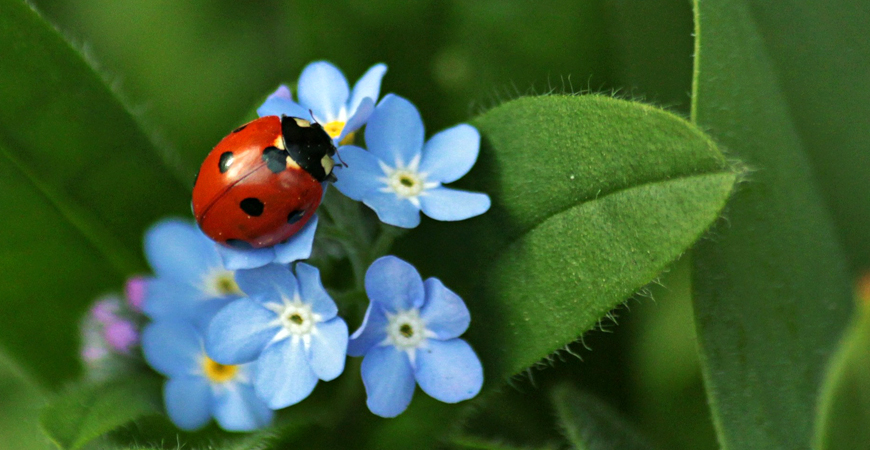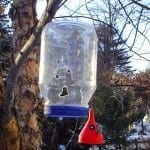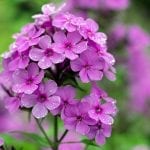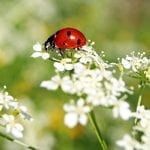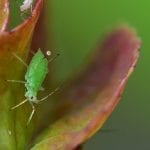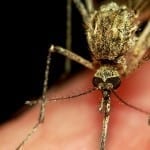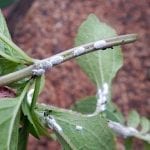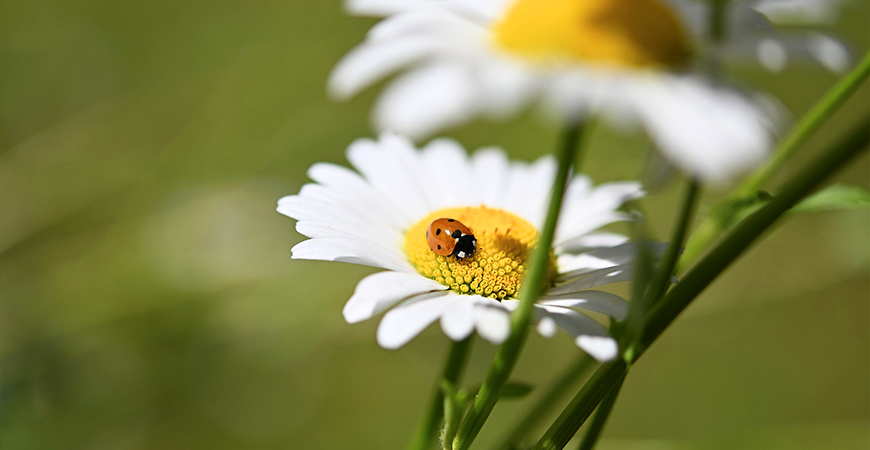
How to Attract Beneficial Garden Insects That Are Good for Your Garden
Did you know that some insects are good for your garden? Some bugs make a meal of insects that damage vegetable gardens, flowers, shrubs, or landscape plants.
Here we’ll cover beneficial garden insects, how they keep bad bugs away, and how you can attract the ‘good bugs’ to your garden.
What kinds of beneficial garden insects are good for my garden?
Beneficial insects are usually classified as either predators or parasites. Good predator insects seek out and eat garden pests. Good parasite insects deposit their eggs or larvae onto a ‘bad bug’ host.
Ladybug
Ladybugs, often called lady beetles, are among the most familiar beneficial insects to home gardeners because they help control other harmful insects in the garden.
They are oval or round in shape and brightly colored. Although they are most known for being red, they can also be orange, yellow, black, and white.
Adult and immature ladybugs feed on aphids, mealybugs, scale insects, spider mites, and other soft-bodied pests. One female can consume as much as 2,500 aphids during her life span.
Keep in mind ladybugs are especially important in the control of scale insects and spider mites.
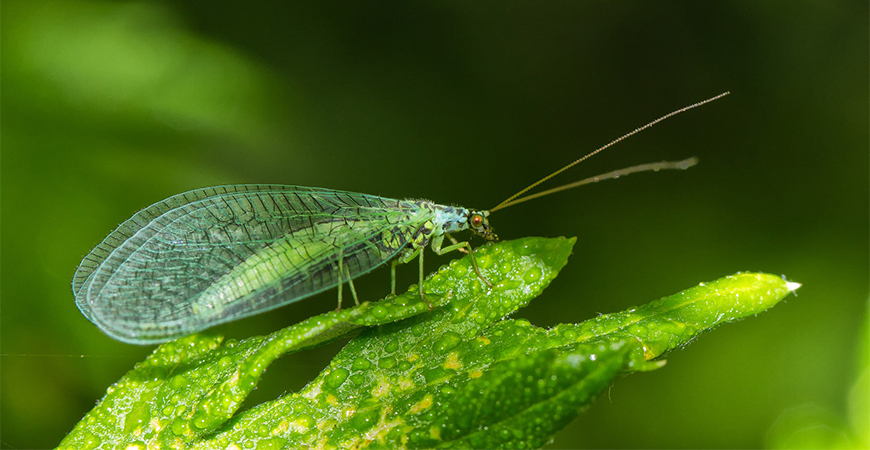
Green Lacewing
Adult green lacewings are identified by their pale green color and transparent, veined wings.
Green lacewings feed on some small pests. However, lacewing larva is a hungry predator.
When they are in the larva stage, they consume small caterpillars, aphids, beetles, and other harmful insects.
To attract green lacewings, plant nectar-producing flowers in the garden.
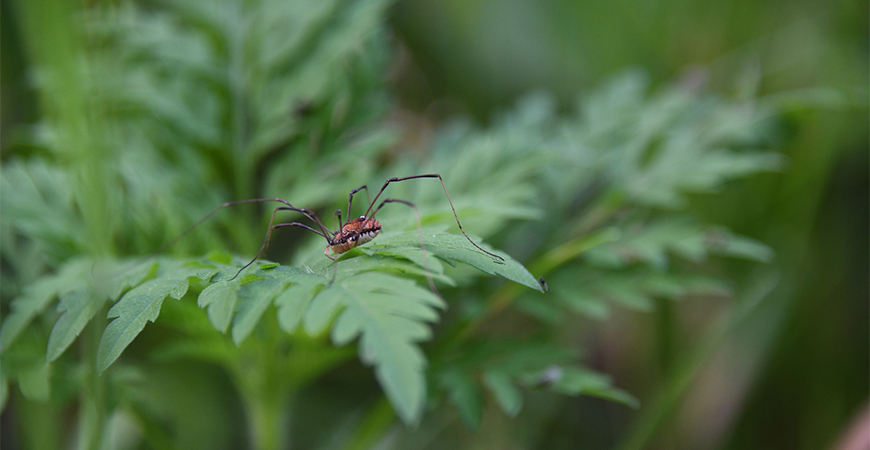
Spider
As unpleasant as spiders may seem, they can be beneficial to the home gardener. Several species feed on insects caught in their web while others hunt down their prey.
Furthermore, they like to make a meal of caterpillars, beetles, aphids, and leafhoppers that may be lingering around.
Although spiders can cause uneasiness, they are also one of the most beneficial bugs to have in your garden.

Tachinid Fly
Tachinid flies are beneficial as they eat a wide range of garden pests. They eat cutworms, earwigs, codling moths, grasshoppers, gypsy moths, tent worms, beetles, sawflies, borers, cabbage loopers, armyworms, peach twig borers, pink bollworms, squash bugs, and green stink bugs.
Adult Tachinid flies grow to 1/3 or 1/2-inch in length. They look similar to houseflies and are usually brown, grey, or black in color with fuzzy abdomens.
Female Tachinid flies lay their eggs on the bodies of garden pests. Ultimately, they end up killing the pest once the yellow larvae hatch.
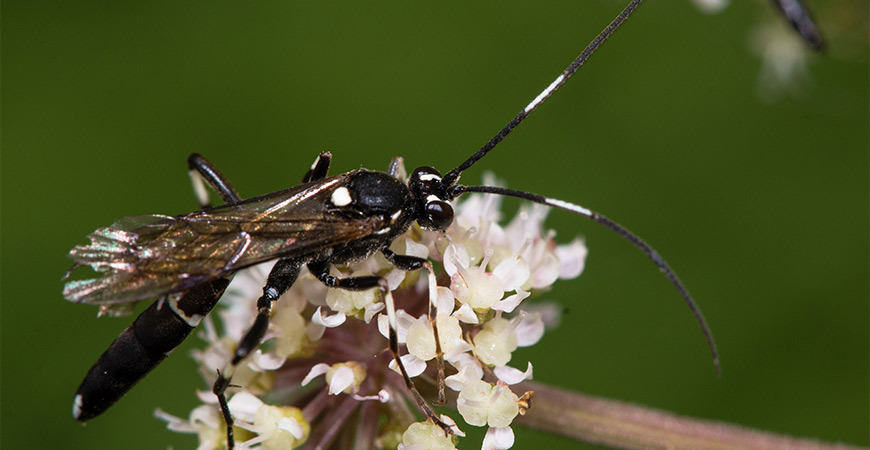
Braconid and Ichneumonid Wasps
Although many people are wary of attracting wasps to their garden, braconid and ichneumonid wasps can be beneficial to your garden’s health.
Some species are smaller and consume aphids and small insects. At the same time, larger wasps consume wood-boring beetles and caterpillars.
Interestingly, female wasps lay their eggs on the inside of bad bugs. The larvae then use the insect for food.
Meanwhile, braconid wasps help to control tomato hornworms, leaf miners, aphids, caterpillars, and flies in the garden.
One way to attract them is by planting yarrow flowers, as this is one of their favorite flowers.
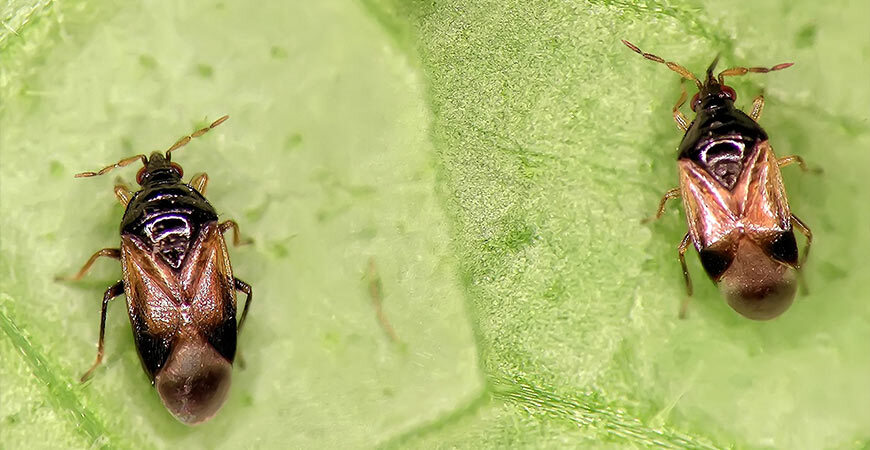
Minute Pirate bugs
Minute pirate bugs, sometimes called flower bugs, are very small (1/20-inch long). They appear as a flattened oval with black and white coloring.
They use their needle-like beak to pierce pests and consume their juices. Minute pirate bugs prey on aphids, thrips, spider mites, scales, mealybugs, whiteflies, and other soft-bodied pests.
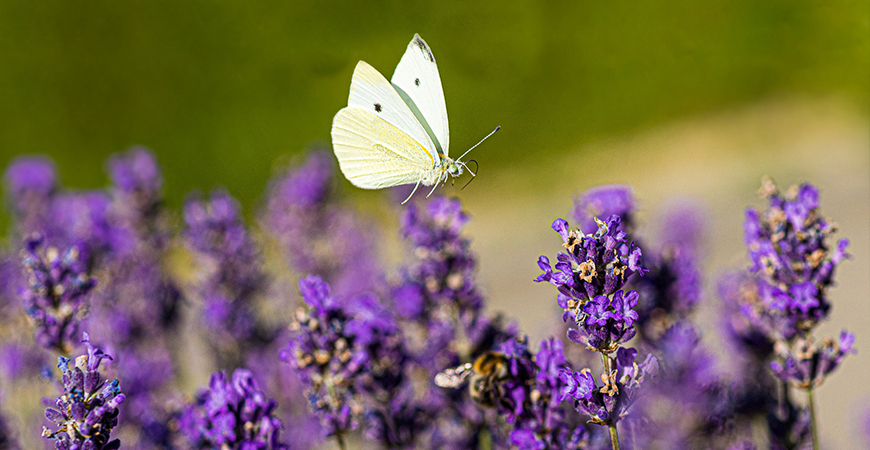
Honey Bees, Butterflies, and Moths
Honey bees, butterflies, and moths are considered beneficial insects because they help to pollinate the plants. These common pollinators play a vital part in your garden and the world’s ecosystem because they help maintain plant life balance.
How can I attract good bugs to my garden?
Here are a few tips to encourage beneficial insects in your garden:
- Use a diverse range of pollen-producing plants and nectars to attract the most beneficial insects. It also creates a healthy ecosystem, which benefits birds and small animals as well.
- Do not pull spent vegetable or herb plants from the garden. Instead, leave them to seed, which will entice good bugs to your garden.
- Choose a specific plant to attract the type of beneficial insect you desire. If you wish to attract butterflies to your garden, plant butterfly bush, phlox, and coneflowers.
- Add a climbing vine or plant that produces bell-shaped flowers because they are a favorite of wasps.
- Let a few weeds grow here and there. Weeds contribute to plant diversity and increase the variety of beneficial insects in the garden.
- Consider where you would like beneficial bugs to visit when planning your garden. Example: Lady beetles and lacewings are attracted to alyssum and catmint. If planted underneath a rose bush, they will provide protection from aphids and other pests.
- A birdbath, fountain, or backyard water feature will attract beneficial insects and birds.
- Learn to tolerate a few pests. They serve as food for beneficial insects and encourage the ‘good guys’ to hang around.
- Do not use pesticides in the garden, as it will kill beneficial bugs as well as pests. Beneficial insects reproduce at a slower rate than garden pests. As a result, pests will quickly reproduce and find a garden free of natural enemies.
- Farmscape to keep pests under control. Designate 5 to 10 percent of your garden space to blooming plants to attract beneficial insects. Plan your garden so there will be flowers all season. The good bugs will continue to be beneficial to your garden.
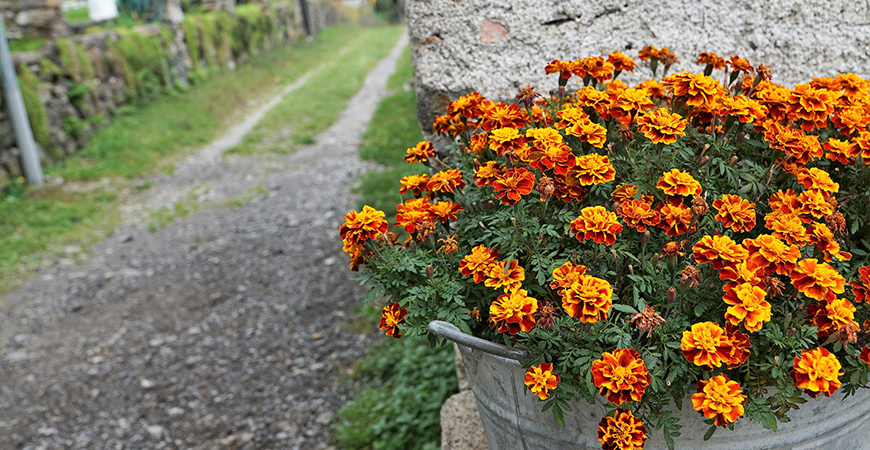
What plants will attract beneficial garden insects to my garden?
Lady beetles, or more commonly known as ladybugs, like a variety of plants. A few of their favorites include tomatoes, caraway, cilantro, yarrow, and dill.
For green lacewings, plant dill, caraway, fennel, cosmos, and golden marguerite to lure them to your garden.
As for tachinid flies, they like Queen Anne’s lace, cilantro, carrots, coriander, and sweet clover.
To attract braconid and ichneumonid wasps, plant yarrow flowers.
Minute pirate bugs are attracted to fennel, caraway, spearmint, pot marigold, cosmos, and goldenrod.
To attract local pollinators like bees, butterflies, and moths, plant flowers or vegetables that are native to your region.
If you’re looking to entice honey bees to your garden, plant pansies, peonies, mint, chives, oregano, lavender, and pot marigold.
Butterflies are attracted to a wide array of flowers. A few examples include pot marigolds, blazing star flowers, black-eyed susan, lavender, butterfly bush, butterfly weed, cosmos, and salvia.
Did you know? At plant nurseries and garden centers, you can purchase live lady beetles in packages. You can also order them online. Order more than you’ll need as some will fly away instead of setting up a home in the garden.

